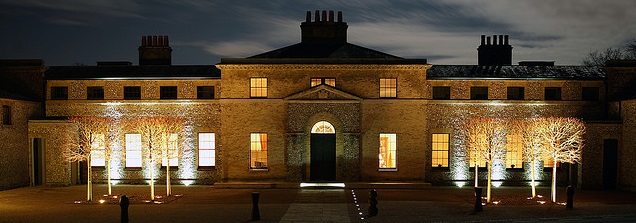“The Kennels” | Goodwood Estate

“The Kennels” is the central clubhouse for all of the Goodwood Estate’s sporting and social memberships and is an intrinsic part of Lord and Lady March’s Goodwood Estate. The Kennels produces up to 40 m of waste water each day, formerly the waste would run into septic tanks after having received primary settlement which latterly had become quite a significant expense due to the number of tanker movements required. As a result, The Goodwood Estate Committee decided to engage John Cornick of Ecoteric Systems, an environmental consultancy company, to assist with evaluation, design and selection of the most suitable process.
A significant investment was required by The Estate Committee which involved sizable civil works undertaken by Isle of Wight contractors Graham Attrill Ltd who installed the concrete tanks for the Bio-Bubble Process. The reduction in tanker movements alone provided a good business case for the investment even before taking into account the numerous environmental benefits of treating this volume of waste on site. Being one of the most popular golfing destinations and having their own organic farm producing top quality local produce for the restaurant, which creates 500 plus gastronomic delicacies per day, the beautiful building which was originally constructed by The Third Duke of Richmond for the welfare of his huntsman and prized hunting hounds makes The Kennels a very popular venue for weddings and conferences producing a large volume of waste having an organic strength 3 times greater than that of domestic foul waste. Apart from enhancing Goodwood Estates environmental standing by treating the waste to an exceptionally high quality and dramatically cutting the number of tankers movements on local roads, the Estates costs for running The Kennels will be hugely cut. For the future, the potential to reuse the water can also be realised having treated the waste to such a good quality. The Bio-Bubble System will have remote support and management via a broadband connection which allows us to support The Estates management plan for ensuring full compliance with their Environmental Permit, furthermore we can optimise the plant periodically throughout the year, in conjunction with our service contract, so that we can keep the on-going running cost to a minimum. The system will monitor dissolved oxygen levels and optimise power usage by controlling blower speed with a variable speed drive. The design will consistently surpass a 10 mg/l BOD5, 15 mg/l suspended solids, and 2 mg/litre NH3-N, indeed we would even expect to virtually eliminate Ammoniacal Nitrate from the final effluent discharge.

